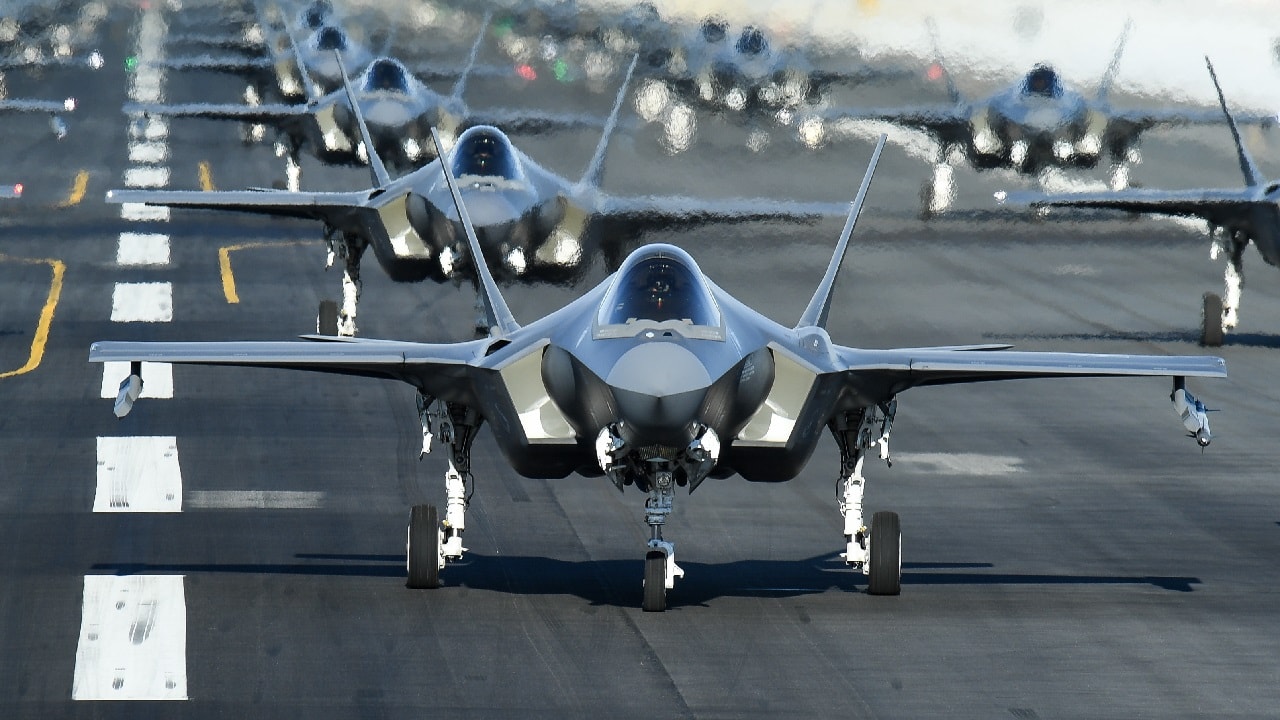Since 2020, high inflation has emerged as a critical economic issue of the post-COVID-19 era. From groceries to mortgage rates, rising costs of supplies have impacted almost all sectors across the country. The aircraft industry has not been immune to this unconventional recession. Last month, the Pentagon’s F-35 program revealed that the cost of producing the next round of F-35 Joint Strike Fighter jets will likely be higher than the last.
(Subscribe to 19FortyFive‘s New YouTube Channel here.)
The platform’s manufacturer Lockheed Martin has pointed to the rising cost of supplies as the reason behind the price hike for the airframe’s materials and parts.
While some industry experts consider the F-35 to be an exorbitantly expensive jet, the fighter’s capabilities make up for its hefty price tag.
Simply state: When it comes to the F-35, you get what you pay for.
Introducing the F-35 Joint Strike Fighter
A product of the Joint Strike Fighter (JSF) program, the F-35 was a result of the manufacturing giant’s Skunk Works project which aimed to develop a cohesive Advanced Short Take-Off/Vertical Landing (ASTOVL) for the Marine Corps and the Air Force.
In the early 1990s, the Air Force’s multi-role fighter and the Navy’s Advanced Fighter-Attack programs were nixed in place of the collaborative Joint Advanced Strike Technology program.
Replace It All
The joint platform was meant to replace a variety of multi-role and strike fighters in the country’s aerial arsenal, including the F-16 Fighting Falcons and the A-10 Thunderbolt IIs. International partners also joined the JSF program, including the United Kingdom, Canada, Denmark, Australia, and Turkey. Lockheed Martin, joined by Northrop Grumman and British Aerospace, competed against Boeing to develop prototype air vehicles to demonstrate conventional takeoff and landing (CTOL, carrier takeoff and landing (CV), and STOVL capabilities). Ultimately, Lockheed Martin’s X-35 demonstrator was awarded the winner.
Is the F-35 Really That Special? Heck Yes
In short, yes, the F-35 is that special.
Often referred to as the “quarterbacks of the sky,” the F-35 sports quite a few formidable capabilities.
The fighter can fly at speeds as high as Mach 1.6 (times the speed of sound), powered by its Pratt & Whitney F135 engine.
An Air Force F-35 pilot instructor says that “There has never been an aircraft that provides as much situational awareness as the F-35,” adding that “In combat, situational awareness is worth its weight in gold.”
The JSF airframes also feature shared targeting and threat information. Its Multi-Function Data Link (MADL) is unique to this fifth-generation fighter and allows for high-speed, continuous, and secure data transmission between all F-35 jets – even those that fly for foreign militaries.
Not only is this feature unique to the F-35, but it also serves as a cost-saving addition down the line. Any advancements in technology or data sharing can be incorporated into the MADL in the future, enabling the F-35 to maintain its relevance for decades to come.
As outlined in an earlier 19FortyFive piece, “Wargames using the F-35 as well as live fire exercises such as the Air Force’s Red Flag have shown that an F-35 can see and destroy large formations of enemy fighters from standoff distances where it cannot be “seen” or detected by an enemy. In this kind of scenario, which has been shown in several wargames, a single F-35 has proven able to see, identify, and destroy larger numbers of enemy airplanes without placing itself within a line of fire.”
The F-35 may be the most expensive fighter globally, but it is also the most advanced. Perhaps the platform’s value can be reflected by the fact that 17 nations are currently flying or have decided to procure the aircraft down the line.
While the rising costs to produce each F-35 jet are not preferred, it does not necessarily mean the fighter is becoming too expensive to rely on. In fact, all military hardware across the board is pricier today due to post-COVID economic woes.
The F-35 is arguably worth every additional penny required to produce and maintain the powerful platform.
MORE: Video – Ukraine Has Massive New NATO ‘Cannon’ Ready To Fight Russia
Maya Carlin, a Senior Editor for 19FortyFive, is an analyst with the Center for Security Policy and a former Anna Sobol Levy Fellow at IDC Herzliya in Israel. She has by-lines in many publications, including The National Interest, Jerusalem Post, and Times of Israel. You can follow her on Twitter: @MayaCarlin.

